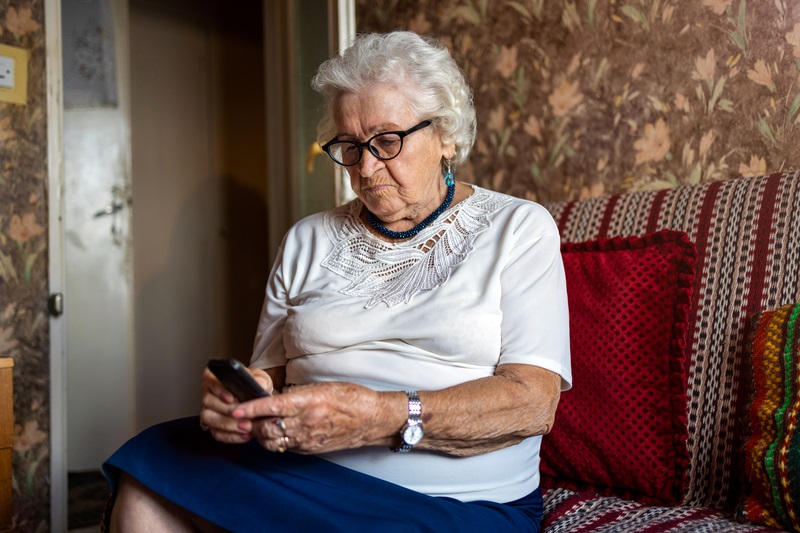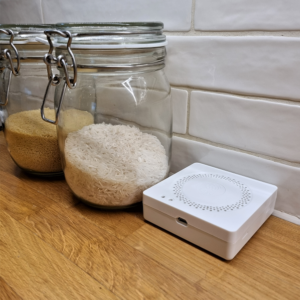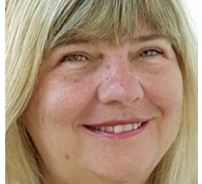
Photo: Piksel | Dreamstime.com
The real benefits of smart homes could be in social care
28 April 2022
by Sarah Wray
Smart home technology promises a futuristic vision of convenience and comfort, where lights sync with music and the fridge orders our groceries. But the true benefits could address the much more important challenge of helping people to live independently at home for longer.
Rising social care costs, an ageing population, and a shortage of care workers pose significant challenges for UK local authorities.
A growing number are exploring how the latest breed of assistive technologies can support vulnerable residents to live independently for longer in their own homes, improving their quality of life while at the same time helping to balance budgets.
Councils must also prepare for the analogue to digital switchover in 2025, which will require many telecare solutions to be upgraded.
Technologies being introduced include sensors, smart speakers and lights, virtual reality, and video communications. Such initiatives have the potential to demonstrate the true power of smart homes beyond gadget gimmickry and ultra-convenience.
Scale and funding are always challenges. To advance from pilots and trials, several councils are beginning to develop new partnerships and financial models.
The kitchen tells a story
Sutton Council in London has been working with Sutton Housing Group and technology company IoT Solutions Group to deploy around 150 in-home sensors which deliver real-time insights on an individual’s level of activity.
The collaboration was already ongoing around IoT use cases related to waste and parking. As demand for social care increased during the pandemic and in-person contact had to be minimised, IoT Solutions Group fast-tracked the new product.
The sensor monitors changes in atmospheric conditions – such as boiling a kettle, opening a door or making a meal, and can also identify issues such as fuel poverty risk or damp.
The battery-powered sensors, connected via a low-power, wide-area network (LPWAN), were delivered through the letterbox, with no plugs, wires or configuration required and no need for an in-home internet connection.

“[Residents] are able to put it in the kitchen and forget about it,” says Neal Forse, Founder & CTO at IoT Solutions Group.
“The atmospheric changes that the sensor detects are aggregated to the cloud, and that’s where we run all the analytics, using algorithms to determine human activity as opposed to anything else.”
This builds a ‘digital twin’ of each individual based on their typical patterns of behaviour and raises an immediate alert to a carer, family member or independent living officer if changes in the pattern are detected.
This offers an alternative to telecare pendant alarms, for instance, which residents have to push and, as Bradley Coupar, Smart Place Project Manager and Social Worker, Sutton Council, notes, “often end up getting hung up or put in a drawer”.
Coupar says the system has already resulted in early interventions and saved at least one life when a resident had a fall in their home.
He says the ongoing pilot has also shown the benefits of data visualisation and using machine learning and predictive analytics to become proactive, rather than reactive. It has the potential to reduce costs for the council which spends over 70 percent of its budget on social care.
“The aim isn’t to remove connection with people [or reduce] support going in, but it’s about making sure you get the right support at the right time through the right means,” he comments.
The IoT Solutions Group sensor service costs around £10 (US$13) per month per device, with discounts applied based on the number of sensors and length of contract.
“The [telecare] devices that we currently have in people’s properties — the cost far exceeds that,” says Coupar.
Now the key is making the technology available more widely through a systemic approach.
For the next stage of the trial, the device will be integrated into several telecare providers’ platforms, which will also make it accessible to more local authorities elsewhere.
“The issue that you come across with pilots is that technology hasn’t been embedded as a product and connected to the rest of the telecare infrastructure,” says Coupar. “Integrating new devices into the existing models that we have is something that I am really pushing.”
Improve, don’t invent
Like Sutton, Newcastle City Council also learned through piloting that working with partners is key.
The council works with consultancy Urban Foresight as its digital transformation innovation partner. Taking a challenge-led approach, the reablement service within adult social care was identified as an area where digital tools could have a significant impact – particularly related to falls. The short-term service helps people recover and live independently at home after a hospital stay or change in needs.
A discovery process found that 41 percent of reablement service users experience a fall before or during their care package, and this was not being recorded centrally. Common causes were not eating and drinking enough, overreaching or falling while moving around the home, and a need for better balance and strength.
The team did a technology scan to see what tools might help as well as a user survey on how people felt about digital technology.
They selected Amazon Alexa smart speakers for reminding people to eat and drink, Philips Smart Hue lights to help people navigate the home, and a physical development programme delivered over video call.

“We were quite surprised how many people have a Wi-Fi connection and digital skills and were interested in using new technologies to help them live safely at home,” says Emma Clement, Senior Consultant at Urban Foresight.
The deployment was small – from spring 2021, 12 users received a mix of the technologies depending on their needs, but Ben McLaughlan, Service Manager, Care Services for Adult Social Care and Integrated Services at Newcastle City Council, says even at this scale the initiative delivered important lessons.
The Alexa device was particularly successful for reminders, the smart lighting was effective but deemed “overly complex for the piloted applications,” and the video calling application was not progressed beyond proof of concept due to connectivity challenges.
Through the project a system was also established for better recording falls.
A major lesson for the council was to play to its strengths. The trial showed that the reablement team is best placed to support adults in using technologies to meet their goals, but not to install them. For the next phase, the council and Urban Foresight will work with an existing telecare partner that is experienced with rolling out home technology and managing issues such as stock control and procurement.
“The principle we’ve taken on board is: improve, don’t invent,” says Clement.
A value for money assessment concluded that using consumer technology is cost-effective and that if the pilot had prevented just one fall, it would have paid for itself more than twice over.
The next phase will also trial pendants that use mobile communications so they can be worn outside the home, and which include a location tracker to support dementia sufferers who may become lost. Alexa devices will be further trialled in a residential care setting.
Clement said other key lessons learned are the importance of taking a challenge-based, technology-agnostic approach, as well as having a dedicated staff member to oversee the programme.
The work is also being integrated into Collaborative Newcastle, a partnership between the council, health and social care organisations, the voluntary sector and universities to improve health and wellbeing in the city. The initiative now has a digital workstream, which will help to ensure new ideas are explored in a holistic way, says McLaughlan.
Return on investment
Liverpool is trialling digital health technology over its own 5G network. This supports more critical applications and offers conversational voice capabilities, which Ann Williams, Commissioning and Contracts Manager of Adult Social services at Liverpool City Council, says is key.

“There are lots of sensors that can use IoT and they’re very good,” she comments. “They are cheaper than the traditional telecare equipment, so that is a plus. But we recognise it can’t replace the telecare system in the same way because you can’t have that voice conversation.”
Phase one of the work started in April 2018 as part of the Department for Culture, Media and Sport’s 5G Testbeds and Trials Programme and ran for 20 months.
The project, which was billed as the first 5G-supported health trial of its kind in Europe, received £4.9 million (US$6.4 million) to test how 5G technology could provide measurable health and social care benefits in a digitally deprived neighbourhood.
It was delivered by a cross-sector consortium and 11 technologies were trialled with volunteers, including apps to reduce loneliness, telehealth services, virtual reality pain distraction, environmental sensors, an anti-dehydration device, and a pharmacy video link enabling people to take medicine safely at home.
An evaluation concluded that using 5G-supported health technologies can improve health outcomes and quality of life for service users and also increase the capacity of health and social care services.
The analysis calculated an estimated potential cost saving to health and social care services of over £200,000 per 100 users per year, dependent on the technologies used.
The second phase of the project received an additional £4.3 million to develop a private 5G network for health and social care services in selected areas of Liverpool.
Technologies include a medical-grade device to manage and monitor health conditions remotely, an app that teaches anxiety reduction techniques, a remote GP triaging service, wound care and management and sensor technology.
The project was recently extended to run until September 2022 and aims to develop a ‘blueprint’ for the use of private 5G networks in delivering public services.
The project will culminate in a detailed analysis of the business case for private 5G.
Williams said this would be about both quality-of-life benefits as well as hard monetary ones and could include factors such as costs avoided through people living independently for longer, reductions in falls and freed-up carers’ hours.
Assessing benefits realised means being clear about goals, she says.
“We’ve always had a real mantra of no tech for tech’s sake. There is all sorts of whizz bang technology out there, but the question is: is it solving a real long-term problem?”
The network effect
While the business case is not just a monetary question, cities do need to consider how programmes can be funded long term.
A growing way to make the business case is a more holistic approach.
“We’ve got the wider civic view than just health and social care,” says Williams. “There are a whole range of other things that we can use this [network] for.”
Reflecting a trend, Liverpool’s initiative is being tied into efforts to reduce the digital divide so more people can access online opportunities for education, work and social purposes.
Further, because Liverpool’s network is private, the city can offer ‘slices’ to mobile network operators to fill coverage gaps.
“That reverses the normal relationship with the mobile phone companies,” Williams says. “One of the big companies said to me: ‘Ann, we don’t have a department where councils sell to us: we sell to you.’”
Williams expects this “disruptive” model to become more popular among local authorities.
Acceptance
People’s homes are their most private spaces so there are questions about whether digital monitoring could feel intrusive.
Coupar says very few residents who were offered the service in Sutton turned it down. No visual or audio recording takes place, and no personal data is collected.
“It was quite an easy ask in fact because there was no need for a complex install. At a time when people were very worried about their health, I think it was welcomed that the local authorities were considering ways to keep people safe.”
Newcastle found that some residents were wary when they were contacted by phone and it proved important to take the equipment to them and demonstrate it.
Urban Foresight provided guidance on data governance and the information that was provided to people about being part of the trial.
“There are definitely a lot of templates that we can reuse in the future,” says McLaughlan.
Williams said a small number of participants in Liverpool returned sensor devices saying they didn’t like the feeling they were being monitored all the time. The tools are “not for everybody,” she says but believes this will also gradually change over time as people become more used to devices such as smart watches and other technology.
“We can’t make sweeping statements either,” she says. “There are lots of [older people] who because of the pandemic suddenly became experts in Facebook Portal or Google Hub.
“They’re using technology without really calling it technology – they know they can speak to their grandchildren if they do this, this and this. And that’s the way that we see people accept things.”











